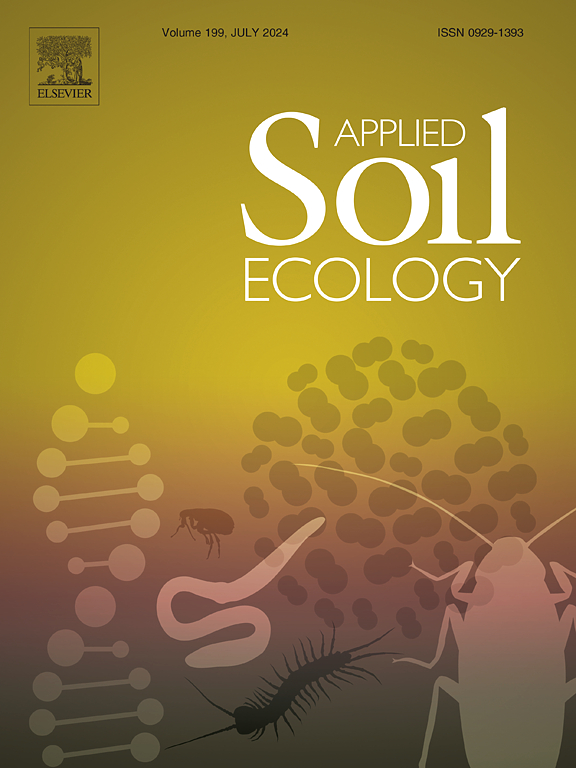Regulation of soil microbial nitrogen limitation by soybean rhizosphere diazotrophs under long-term no-till mulching
IF 4.8
2区 农林科学
Q1 SOIL SCIENCE
引用次数: 0
Abstract
Diazotrophs play a vital role in biological nitrogen fixation in agroecosystems. Stoichiometric characterization of soil extracellular enzymes is a key indicator of the effectiveness of microbial nutrient acquisition. However, the mechanisms for exploring the effects of long-term mulching practices on rhizosphere diazotrophic communities and their response to enzyme stoichiometry from the soybean phenology remain unclear. In this study, based on long-term experiments, we adopted four mulching patterns no mulching (CK), straw mulching (SM), plastic mulching (PM) and ridged and plastic mulching (RM). The dynamic changes of rhizosphere soil nutrient characteristics, enzyme stoichiometry characteristics, and diazotrophic dominant communities of soybean were investigated. The study results showed that nutrient content, enzyme activity, and diazotrophic community structure of the rhizosphere soil changed significantly as the soybean growth phenology progressed. Compared to CK, SM treatment enhanced the soil organic carbon (SOC) content (four-leaf (V4) +18.78 %, full-pod (R4) +18.23 %, full maturity (R8) +28.66 %). At R8, the SM treatment significantly increased the soil total nitrogen (STN) content by 16.67 % compared to CK. Our applying vector-threshold (V-T) modeling analysis showed that rhizosphere soil was not carbon (C)-limited. Soil microbial nutrient limitation shifts from nitrogen (N) to phosphorus (P) limitation and finally to N-limitation. In addition, we found that diazotrophs were dominated by Alphaproteobacteria and Betaproteobacteria, at the diazotrophic class level. The dominant diazotrophic genera were Azohydromonas, Bradyrhizobium, and Skermanella. Furthermore, microbial nutrient limitation regressed linearly with the dominant genus. The results indicated a negative correlation between the relative abundance of Azohydromonas, Bradyrhizobium, and Skermanella and microbial N limitation; we observed that mulching measures significantly increased soil mineral N content and promoted an increase in the abundance of dominant diazotrophic genera, thereby effectively mitigating the N limitation faced by microorganisms. Finally, partial least squares path model was used to verify that mulching measures can improve the dominant diazotrophic genera by adjusting the soil physical and chemical properties and regulating VTN/P limitation. Additionally, diazotrophs modify VTN/P limitation by regulating the activity of extracellular enzyme secretion. This study presents a valuable contribution to the domain of enzymatic stoichiometry within agricultural ecosystems, enriching the understanding of relevant processes and offering scientific and technological support for agricultural production.

求助全文
约1分钟内获得全文
求助全文
来源期刊

Applied Soil Ecology
农林科学-土壤科学
CiteScore
9.70
自引率
4.20%
发文量
363
审稿时长
5.3 months
期刊介绍:
Applied Soil Ecology addresses the role of soil organisms and their interactions in relation to: sustainability and productivity, nutrient cycling and other soil processes, the maintenance of soil functions, the impact of human activities on soil ecosystems and bio(techno)logical control of soil-inhabiting pests, diseases and weeds.
 求助内容:
求助内容: 应助结果提醒方式:
应助结果提醒方式:


